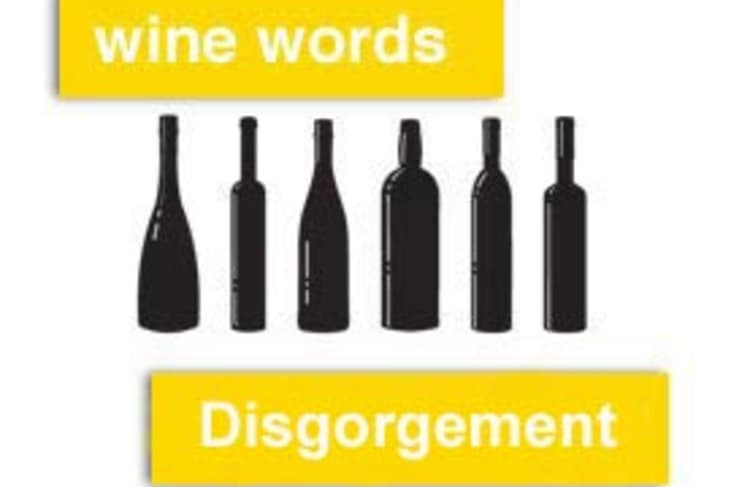Wine Words: Disgorgement
Disgorgement is a wine word that pertains to Champagne and sparkling wines. Have you ever seen a notice on the back label of some bottles of Champagne saying “disgorged on X date”? Do you know what this means? And why do some bottles carry the notice while other do not?
Disgorgement, or dégorgement in French, is a step in making Champagne and other bottle fermented sparkling wines. After the second fermentation the wine rests on the dead yeast cells (called “lees”) for a period of time, usually a minimum of 15 months for NV Champagne and a minimum of 3 years for vintage dated Champagnes (though most producers age for much longer then the minimum). This is called aging “sur lie”, or on the lees. Disgorgement is the process of taking these dead lees or sediment out of the bottle, so that when we buy the Champagne or sparkling wine it is crystal clear.
Before the disgorgement step takes place the individual bottles are riddled at an angle, so that the lees (sediment) accumulate and collect in the neck of the bottle. This makes for easier and more uniform removal.
Traditionally this was a manual process, but today it is automated. The neck of the bottle is placed in a solution of freezing brine, which freezes the lees into a sort of hard pellet. Once the bottle is opened, the pressure from the bubbles in the bottle push out the pellet of frozen sediment, after which the dosage is added and the wine is re-corked and packaged for sale.
The disgorgement date thus marks the date that the Champagne or sparkling wine received completed its production cycle. It is not an indication of vintage or a sell by date!
The whole idea of putting disgorgement dates on Champagne (and other sparkling wines) is that a particular ‘batch’ (or cuvée) of Champagne will not all be disgorged at the same time. The bottles disgorged first will taste slightly different than those disgorged later. If you have two bottles of seemingly the same Champagne without disgorgement dates, you really have no idea whether or not they are from the same disgorgement batch. Having the date of disgorgement stamped on the bottle helps the consumers know whether in fact they are comparing apples with apples. Or not!
Within the trade there are mixed views as to the usefulness of putting disgorgement dates on Champagne and sparkling wines. Those in favor feel that it helps consumers by giving them useful information. Those against feel that it is more likely to confuse the consumer, who might think it has something to do with the vintage, as many wine consumers won’t know what disgorging actually means anyway, or that it might be indicating a ‘sell-by’ date, which it certainly is not indicating.
So watch out for it on the next bottle of Champagne you buy.
Mary Gorman-McAdams, MW (Master of Wine), is a New York based wine educator, freelance writer and consultant.
Previous Wine Words
• Wine Words: Clarity
• Wine Words: Color
• Wine Words: Complexity
• Wine Words: Texture
•
Wine Words: Aromas
•
Wine Words: Alcohol
•
•
•
•
•
•
Wine Words: Sweetness
• Wine Words: Style
• Wine Words: Oak
• Wine Words: Clarity
• Wine Words: Extraction
•
•
• Wine Words: Reserva, Riserva, Reserve
• Wine Words: Quality
•
Wine Words: Vintage
•
•
Wine Words: Bordeaux Blend
• Wine Words:
•
• Wine Words: Champagne
•
